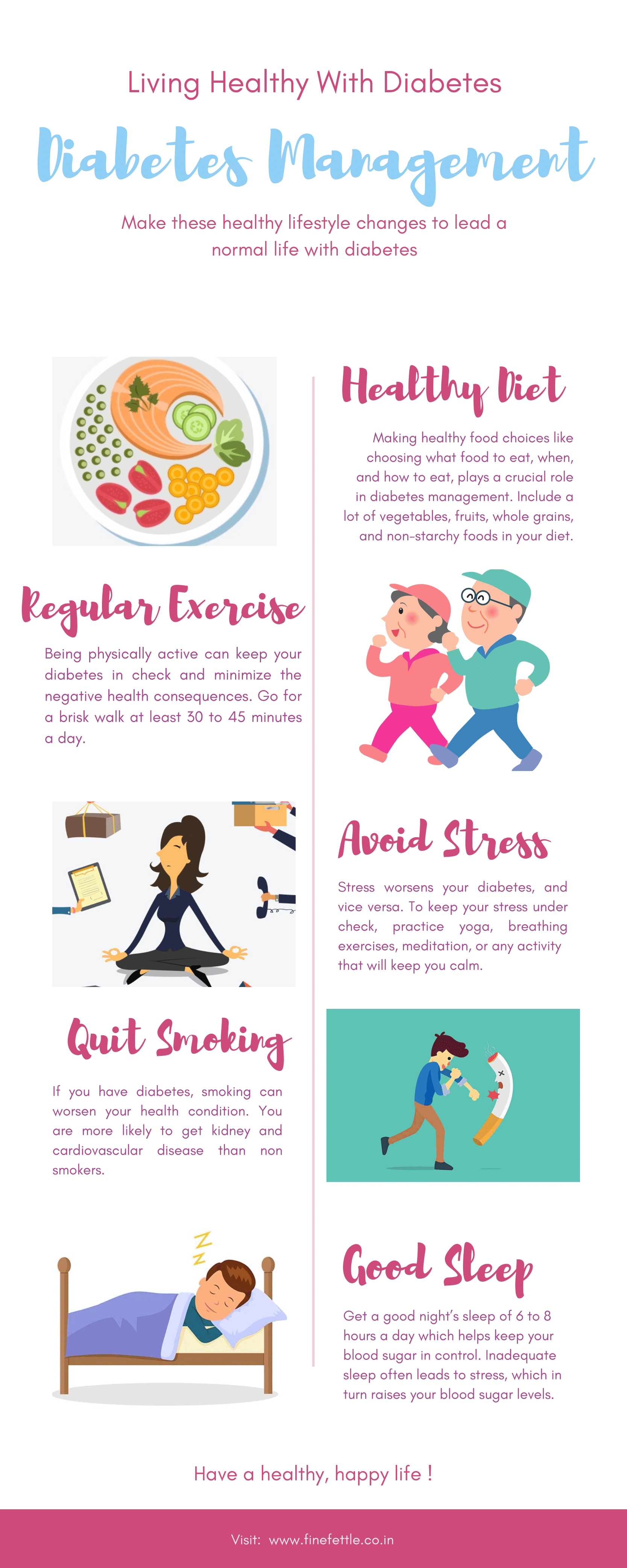Among the list of top countries, India stands in second place with an estimated 77 million people with diabetes. That means that for every six diabetes people in the world, one is from India. The number is expected to increase steadily in the next 25 years. This makes people more anxious to know more about diabetes like what are the symptoms of diabetes? What are the types of diabetes? What can be done to live a normal life with diabetes?
So, here’s everything you wanted to know about diabetes.
What Is Diabetes, Anyway?
Diabetes Mellitus (DM), commonly known as Diabetes, is the most common chronic metabolic disease in the world wherein blood sugars are increased. Diabetes is considered a disorder as it brings with it a lot of other health complications affecting major parts of the body like kidneys, heart, brain, and others. Without proper control and careful management, diabetes can also lead to severe life-threatening complications like stroke and heart disease. Everyone has this question “Does Diabetes Shorten your Life?” The short answer is “Not actually”. The life expectancy of people with diabetes can be impacted by when the person spots the symptoms, and how soon he/she gets it treated.
There are different kinds of diabetes and controlling diabetes depends on its type. Not all forms of diabetes are caused due to obesity or an unhealthy lifestyle. So, the first and foremost thing is to get an accurate diagnosis of the type of diabetes you have.
What Are The Types Of Diabetes, Its Causes, And Symptoms?
There are three major types of diabetes – Type 1, Type 2, and Gestational diabetes.
1. Type 1 or Juvenile Diabetes
This type is often diagnosed in childhood. It is an autoimmune disorder where your body’s immune system destroys the insulin-producing cells in the pancreas. As a result, your body does not produce any insulin. This requires you to take artificial insulin injections daily to stay alive.
Causes
Doctors and researchers believe that genes and environmental factors could be the cause of type 1 diabetes. Although Type 1 diabetes is treatable with insulin injections, it doesn’t have a permanent cure. Even lifestyle changes like diet and exercise won’t reverse it.
Symptoms
- Increased hunger and thirst
- Fatigue
- Weight loss
- Frequent urination
- Blurred vision
- Mood swings
2. Type 2 or Adult-Onset Diabetes
This is the most common form of diabetes. Almost 90 to 95% of people with diabetes are categorized under type 2. Unlike type 1, the pancreas produces insulin in type 2 but it doesn’t produce enough insulin or the body becomes resistant to insulin and doesn’t use the insulin as effectively as they once did.
Causes
Type 2 diabetes is usually caused by a lot of factors, like genes, family history, obesity, an inactive lifestyle, age, high alcohol intake, high blood pressure, gestational diabetes, and ethnicity.
Symptoms
- Increase in hunger, thirst, and urination
- Yeast infection
- Slow-healing sores or cuts
- Numbness in feet or legs
- Blurred vision
3. Gestational Diabetes
This occurs in pregnant women due to hormonal changes, where there is a temporary rise in blood sugar levels. Then, the body becomes less sensitive to insulin. Gestational diabetes does not occur in all pregnant women and usually goes away after you give birth.
Causes
Genetics and hormonal changes are considered to be the main cause of gestational diabetes. However, there are also various other causes like being overweight before pregnancy, a history of gestational diabetes, given birth to a large baby, had a stillborn baby, and have high blood pressure or other medical complications.
Symptoms
Gestational diabetes in general has no symptoms. Some women with this type of diabetes might experience increased thirst or urination.
Less Common Types Of Diabetes
There are 2 rare types of diabetes – monogenic diabetes and cystic fibrosis-related diabetes. The first one is caused by a mutation in a single gene. Whereas, the latter is caused as a side-effect of having cystic fibrosis.
How To Live A Normal Life With Diabetes?

One of the hardest things about being diagnosed with diabetes is that it requires dramatic changes to your lifestyle. But there’s good news: as more and more research comes out on diabetes, there are more and more solutions coming out to help you lead a normal life with diabetes. Adopting a healthy lifestyle can help control your diabetes to a great extent. Here are a few tips to live a healthy, happy life with diabetes.
1. Healthy Diet
Making healthy food choices like choosing what food to eat, when, and how to eat, plays a crucial role in diabetes management. With so many food options, it might be hard to choose the right food. Listed here are a few tips to make the best food choices.
- Include a lot of non-starchy foods like salad, broccoli, or green beans, and limit protein and starchy foods like rice.
- Increase vegetables, fruits, whole grains, and low-fat milk in your diet
- Avoid processed, packed, or canned foods
- Reduce sugar, salt, and fat content
- Include non-fried fish rich in omega-3 fatty acids at least twice a week
- Drink plenty of water
You can find a lot of diabetes-friendly recipes that can please your taste buds as well as help you manage your diabetes.
2. Regular Physical Activity
Being physically active can keep your diabetes in check and minimize the negative health consequences. Go for a brisk walk at least 30 to 45 minutes a day. You can also do moderate aerobic exercise and other activities like swimming and gardening that will increase heart rate and can help your heart strong.
Exercising regularly can lower blood glucose and make your cells more sensitive to insulin, thereby reducing the impact of diabetes on your health.
3. Avoid Stress
Stress and diabetes are mutually connected. Stress worsens your diabetes, and vice versa. To keep your stress under check, practice yoga, breathing exercises, meditation, reading, listening to music, or any activity that will keep you calm and composed.
4. Regular Consultation
Go for periodical checkups to ensure that your blood sugar, blood pressure, and cholesterol are under control. Discuss any queries or concerns you have with your doctor. Keep a track of all the important instructions that your health care professional may provide. Once in six months, do a screening of your eyes, kidney, and liver to detect any early signs of damage due to diabetes.
5. Do Not Skip Medications
Do not forget to take your medications on time. Even if you change your diet or lifestyle, take the prescribed medicines in the proper dosage as per your doctor’s instructions. Have an updated list of all your medicines. You can set reminders to know when it’s time to take your medicines.
6. Quit Smoking
Making healthy lifestyle changes is another important step to lead a normal life with diabetes. If you have diabetes, smoking can worsen your health condition. You are more likely to get kidney and cardiovascular disease than non-smokers. Moreover, smoking increases your blood sugar level, thus making it harder to control your diabetes.
7. Get Quality Sleep
A good night’s sleep helps keep your blood sugar in control. Have a quality sleep of 6 to 8 hours. Inadequate sleep often leads to stress, which in turn raises your blood sugar levels.
A Word From Fine Fettle
Making healthy lifestyle changes and carefully managing your blood sugar can help you lead a normal life with diabetes. Mentioned above are some of the changes that you can make. It might seem difficult to begin, but soon you will get used to it and will see great results.





